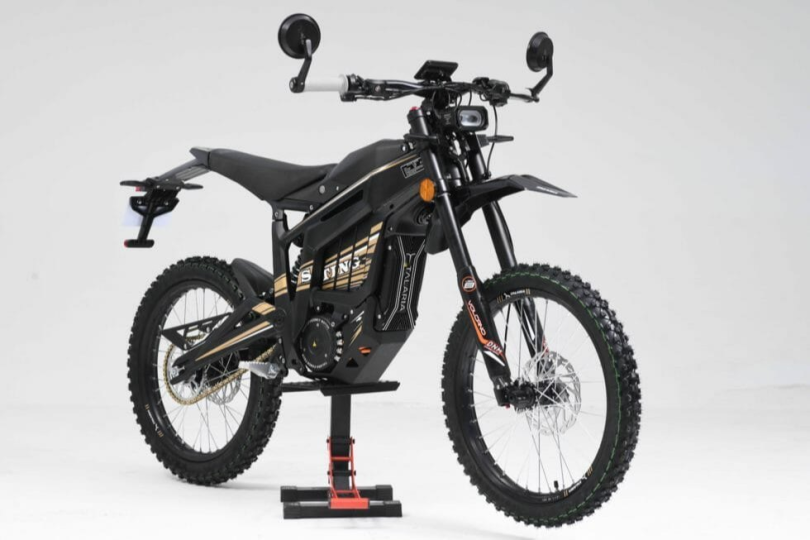Urban mobility is undergoing a dramatic transformation as cities around the world rethink how people move. Traffic congestion, pollution, limited parking, and rising fuel costs have created an urgent need for cleaner and more efficient modes of transportation. Among the innovations shaping this shift, Talaria eBikes are emerging as a powerful force that bridges sustainability, convenience, and technology. These electric bikes are not just alternatives to traditional vehicles—they represent a vision of a smarter, greener, and more connected future for urban life.
The Changing Landscape of Urban Transportation
For decades, urban mobility revolved around private cars, buses, and trains. While these systems remain essential, they are increasingly strained by population growth and the rapid expansion of cities. According to the United Nations, more than 68% of the world’s population will live in cities by 2050, intensifying the challenges of urban transport.
Car-centric infrastructure has proven to be unsustainable for dense city environments. Congestion leads to billions of lost productivity hours each year, and transportation accounts for nearly 24% of global CO₂ emissions. These challenges have prompted governments, city planners, and citizens to look for alternatives. Micromobility—transportation options such as e-scooters, bicycles, and eBikes—has gained momentum as an agile solution to urban challenges.
This is where Talaria eBike step in, combining innovation with practicality to reimagine how people commute and navigate cities.
What Makes Talaria eBikes Unique?
Talaria eBikes stand out in the micromobility sector because of their blend of power, durability, and versatility. Originally inspired by high-performance dirt bikes, Talaria has reengineered electric bikes to be adaptable not just for off-road adventure but also for city commuting.
Key features include:
- Powerful Electric Motors: Talaria eBikes are equipped with motors capable of providing swift acceleration, making them ideal for both urban roads and steep terrains.
- Extended Battery Range: With advanced lithium-ion battery systems, riders can travel long distances on a single charge, reducing the need for frequent recharging.
- Durable Design: Built with robust frames and suspension systems, these bikes withstand both city potholes and rugged trails.
- Low Maintenance Costs: Compared to cars or motorbikes, Talaria eBikes require minimal upkeep, making them an affordable option in the long run.
These features make them suitable for a variety of riders—daily commuters, delivery workers, students, and even recreational users who want a balance between adventure and convenience.
Reducing Traffic Congestion
One of the most pressing problems in cities is gridlock. Cars often move at walking speeds in crowded areas, wasting time and fuel. Talaria eBikes offer a nimble solution. Their compact size allows riders to bypass traffic, use bike lanes, and park in tight spaces.
If more commuters switch to eBikes, cities could see a significant reduction in traffic congestion. A study from the Institute for Transportation and Development Policy (ITDP) suggests that if bicycles and eBikes make up 14% of urban travel by 2050, cities could reduce CO₂ emissions by 11% and save trillions of dollars in infrastructure costs. Talaria eBikes contribute to this vision by making cycling not only practical but also exciting.
Promoting Environmental Sustainability
Sustainability is central to the future of mobility. Unlike cars that burn fossil fuels, Talaria eBikes are powered by rechargeable batteries, which produce zero emissions during operation. When charged using renewable energy sources such as solar or wind, their carbon footprint becomes even smaller.
Additionally, the shift to eBikes reduces noise pollution—an often-overlooked issue in cities. The quiet operation of Talaria eBikes contributes to creating more livable urban environments, where streets are less dominated by engine noise.
Enhancing Accessibility and Equity
Urban mobility must also address inclusivity. Cars are expensive, and public transport can be unreliable in certain regions. Talaria eBikes provide a middle ground: affordable, flexible, and efficient.
For gig economy workers, such as food delivery riders, Talaria eBikes offer a faster and cheaper alternative to motorbikes. For students and professionals, they eliminate the burden of rising fuel prices and parking hassles. This democratization of transport empowers more people to access education, employment, and social opportunities.
Integration with Smart Cities
The future of cities lies in digital connectivity, and Talaria eBike align perfectly with this trend. As urban centers adopt smart mobility ecosystems, eBikes can integrate with mobile apps, GPS tracking, and shared mobility platforms.
Imagine a system where Talaria eBikes are available through a subscription model or as part of a city’s public transport network. Riders could unlock bikes with their smartphones, track their carbon savings, or even connect to charging stations powered by renewable grids. Such integration would make cities more efficient and sustainable while giving residents greater mobility options.
Overcoming Challenges
Despite their promise, the widespread adoption of Talaria eBikes faces some challenges. Infrastructure is one of the biggest hurdles—many cities lack safe bike lanes, charging facilities, or secure parking. Governments will need to invest in cycling infrastructure to support this shift.
Another challenge is perception. In some places, cycling is still seen as recreational rather than a primary mode of transport. Awareness campaigns, policy incentives, and corporate partnerships can help change this narrative.
Battery recycling is another consideration. As the number of eBikes grows, developing efficient recycling systems for lithium-ion batteries will be crucial to minimizing environmental impact.
Looking Ahead The Role of Talaria eBikes in Future Cities
The future of urban mobility will not be dominated by a single solution but by a diverse mix of transportation modes. Public transit, autonomous vehicles, and micromobility will all play roles. Talaria eBikes occupy a sweet spot within this ecosystem—fast, efficient, eco-friendly, and fun.
We can expect to see more partnerships between eBike manufacturers like Talaria and city governments. Incentives such as subsidies for eBike purchases, tax benefits, or free charging points will accelerate adoption. As more people experience the benefits firsthand, the cultural shift toward sustainable commuting will gain momentum.
Conclusion
The transformation of urban mobility is not just about technology—it’s about creating healthier, cleaner, and more livable cities. Talaria eBikes exemplify how innovation can address real-world problems like congestion, pollution, and accessibility. By offering a practical yet thrilling alternative to traditional transport, they are redefining how we think about commuting.
As cities continue to evolve, Talaria eBikes will play a vital role in shaping the future of transportation—one that is faster, greener, and more inclusive. The future of urban mobility is not on four wheels but on two, and it’s electric.






